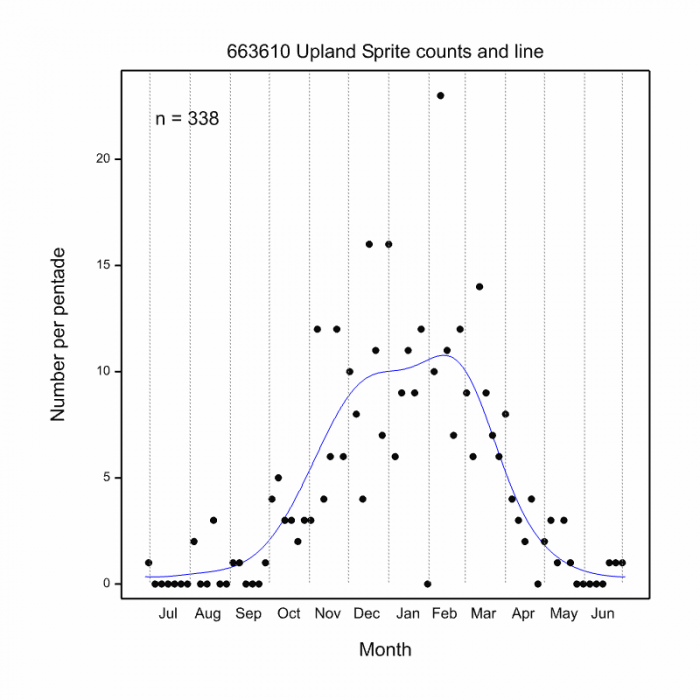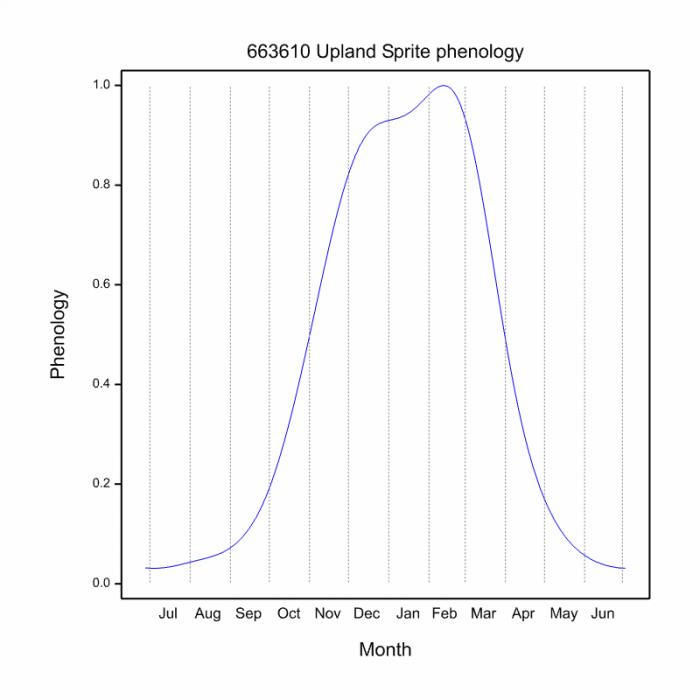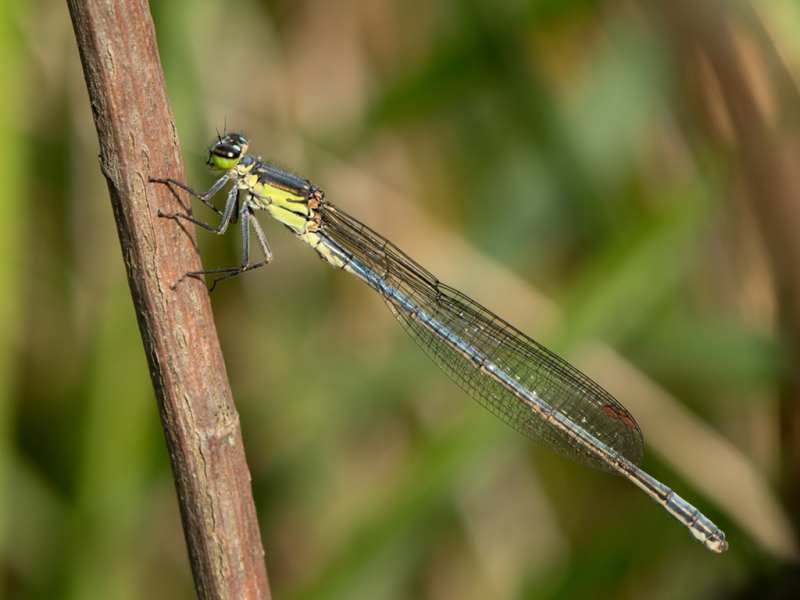View the above photo record (by Christian Fry) in OdonataMAP here.
Find the Upland Sprite in the FBIS database (Freshwater Biodiversity Information System) here.
Family Coenagrionidae
Pseudagrion spernatum – UPLAND SPRITE
Identification
Small size
Length up to 44mm; Wingspan reaches 58mm.
Males most resemble Pseudagrion inopinatum (Balinskys Sprite) and Pseudagrion draconis (Mountain Sprite). Easily differentiated from Balinsky’s Sprite as that species has mauve terminal segments as opposed to blue in the Upland Sprite.
Upland Sprite males can be separated from those of Mountain Sprite by having a green, not black labrum and brighter green lower thorax sides. In male Mountain Sprites the lower thorax sides are duller greenish-blue.
Females are distinctive and brightly coloured. They are unlikely to be confused with others within its distribution range.
Click here for more details on identification.
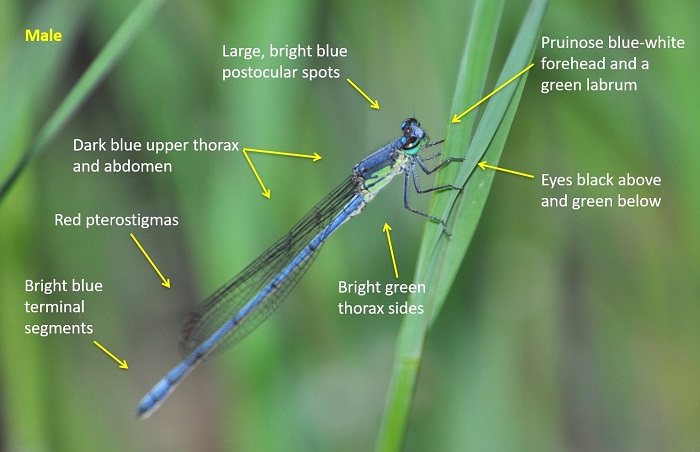
Elands River, KwaZulu-Natal
Photo by Ryan Tippett

Elands River, KwaZulu-Natal
Photo by Ryan Tippett
Habitat
A mid-altitude species that inhabits clear, flowing streams and rivers and often in hilly or mountainous areas. Prefers sites with vegetated and grassy banks.

Photo by Ryan Tippett
Behaviour
Usually seen perched on vegetation close to or overhanging the water. Sometimes seen on rocks in the water. Interestingly the females are often more conspicuous than the males. Females are usually found alongside the males.
Most active from October to April (see Phenology below).
Status and Conservation
Locally Common. Listed as of Least Concern in the IUCN Red List of Threatened Species. Makes little use of man-made habitats due to its reliance on flowing streams and rivers. Can occupy slightly degraded rivers, such as those with some alien plants along the banks, provided the water is flowing and clean enough.
Distribution
Pseudagrion spernatum occurs mainly in the upland regions of Eastern and Southern Africa. Ranging in a broad band from Ethiopia in the North down to South Africa.
The South African distribution is centered around the escarpment from the central Eastern Cape up to the Soutpansberg in Limpopo. Also occurs in and around Gauteng.
Below is a map showing the distribution of records for Upland Sprite in the OdonataMAP database as at February 2020.

The next map below is an imputed map, produced by an interpolation algorithm, which attempts to generate a full distribution map from the partial information in the map above. This map will be improved by the submission of records to the OdonataMAP section of the Virtual Museum.
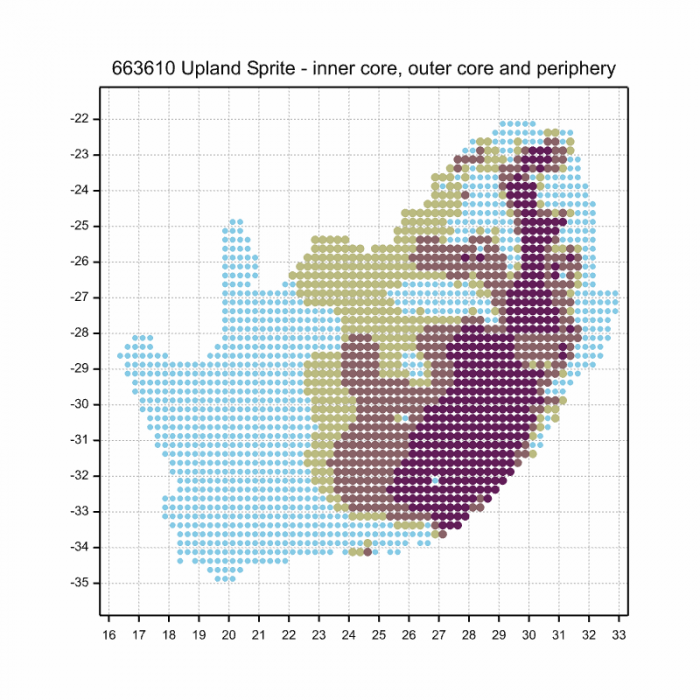
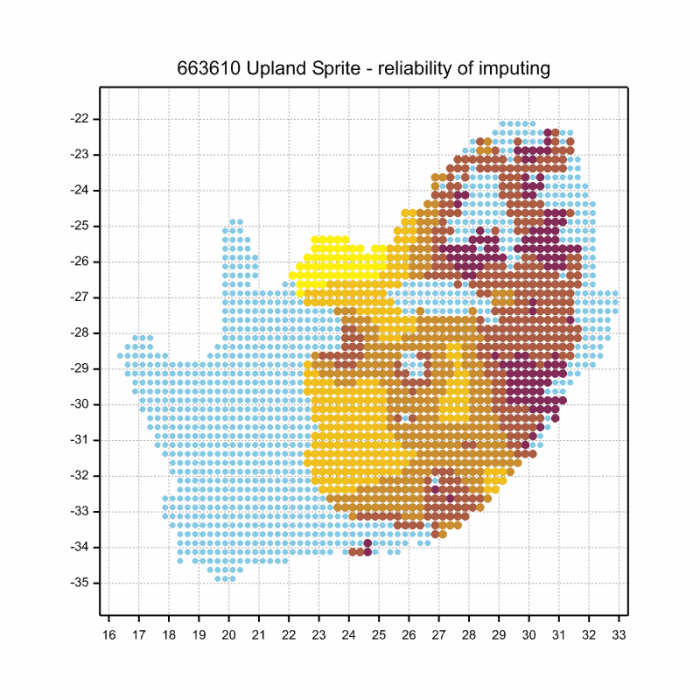
Ultimately, we will produce a series of maps for all the odonata species in the region. The current algorithm is a new algorithm. The objective is mainly to produce “smoothed” maps that could go into a field guide for odonata. This basic version of the algorithm (as mapped above) does not make use of “explanatory variables” (e.g. altitude, terrain roughness, presence of freshwater — we will be producing maps that take these variables into account soon). Currently, it only makes use of the OdonataMAP records for the species being mapped, as well as all the other records of all other species. The basic maps are “optimistic” and will generally show ranges to be larger than what they probably are.
These maps use the data in the OdonataMAP section of the Virtual Museum, and also the database assembled by the previous JRS funded project, which was led by Professor Michael Samways and Dr KD Dijkstra.
Phenology
